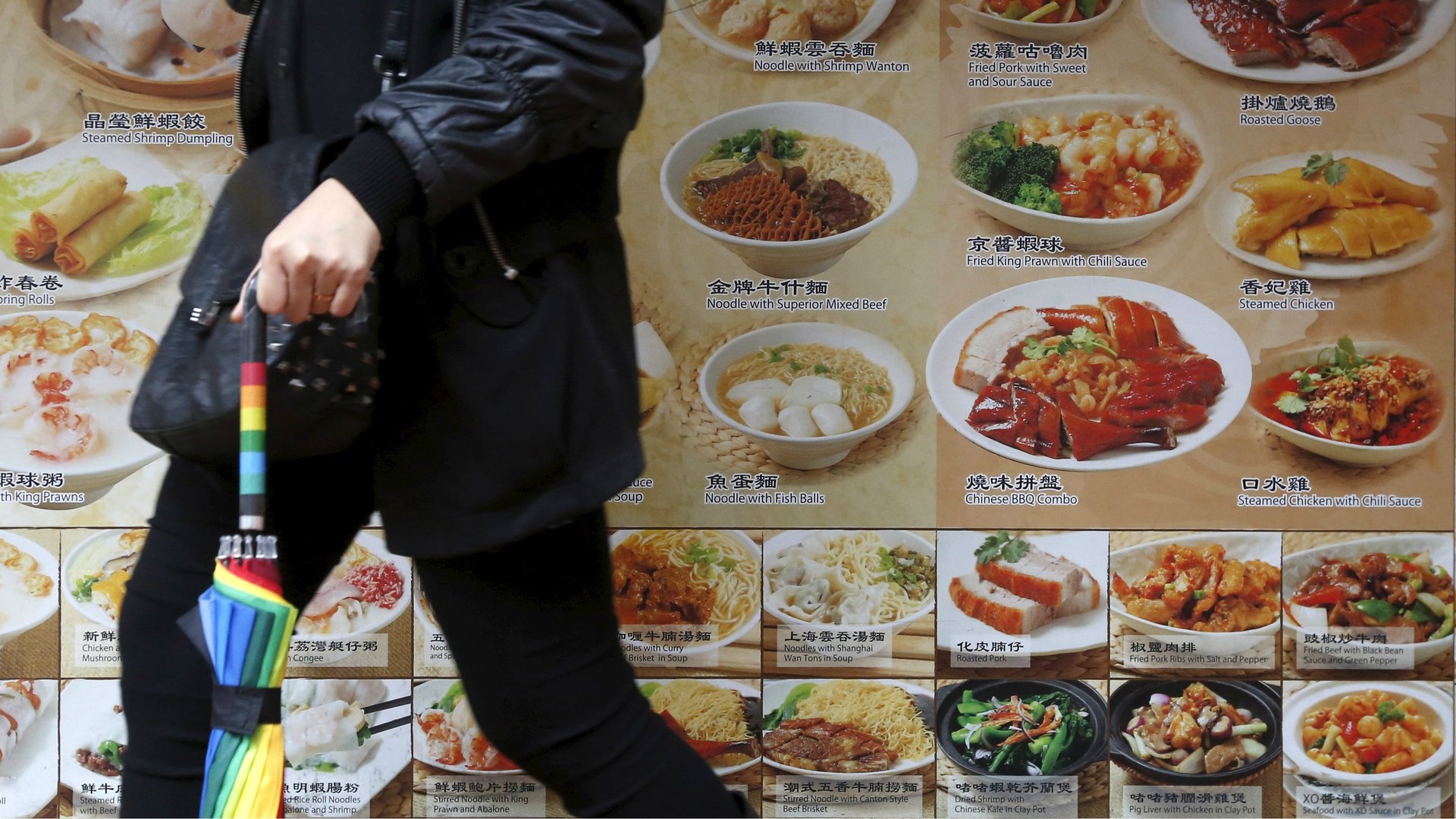What Americans are willing to pay for “ethnic” restaurant food reveals some deep prejudices
The American palate is open to more new experiences now than ever before, but it is not an equal-opportunity taster.


The American palate is open to more new experiences now than ever before, but it is not an equal-opportunity taster.
What people are willing to pay for certain cuisines is an indicator of how they think about race, class, and ethnicity. At least, that’s what Krishnendu Ray—the chair of nutrition and food studies at New York University—has found.
Using price as a stand-in for prestige, Ray gathered data from the Zagat restaurant guidebooks to measure how the prices of different cuisines have changed over the last 30 years in New York City, and to explain how attitudes toward subsets of people, particularly immigrants, have changed with them.
Americans have been willing to shell out more for French food than just about any other cuisine since at least 1984, Ray’s data show. Meanwhile, people expect to pay less for Chinese, Thai, and Vietnamese foods. People are also willing to pay more for “American” and “continental” (read: Western European) cuisine than they are for Mexican or Indian—all indications that they assign worth to food based on perceptions about each group.
Race is a big part of the equation, but it can also be trumped by people’s ideas about class and social status.
Take the Italian-Americans as an example. Ray argues that in the 1930s and 1940s, Americans eschewed the Italian cuisine brought into US culture by mostly poor Italian immigrants. People complained the infusion of garlic was too overbearing, that dishes were over-spiced and that—wait for it—the foods made people drink too much alcohol.
“Subsequently, as the Italians climbed up the social ladder…we upgraded our notion of Italian culture,” he says. “And of course now we cannot stop talking about how great Italian food is.”
Japanese cuisine experienced something similar in the 1990s, when the price of a meal in a Japanese restaurant went up (in 2014 it ranked second, right behind French food, up from sixth place in 1986). Ray said this coincided with an American perception about wealth in Japan, which has led to Japanese chefs more frequently appearing on “top chef” lists.
“I see that Japanese chefs are valued because Japanese culture is valued in the Western world because of its economic power,” he said.
When it comes to seeking out healthy food, Ray says, exoticism plays a role. The fascination with quinoa, avocados, mangos and Bolivian cherimoya is result of Americans growing more leery of industrialized, processed food systems, “so anything poor, exotic people do far away could be a good thing.”
The “super food” discussion is framed as one about health, he says, but if people were really so conscientious about their food intake, they’d hold the stews, soups, and legumes of “cheaper” cuisines such as Mexican and Indian in higher regard.
“That would be good for the world, that’d be good for the environment and our health,” he added.